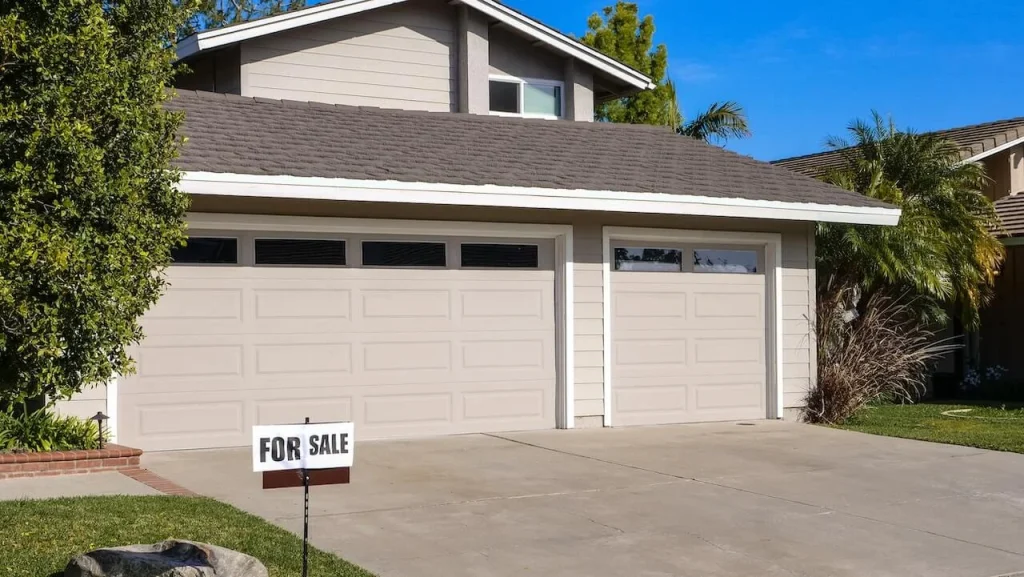2022 has been a great year for the Philippine Real Estate Market. From the increasing consumer demand to attractive investment returns, it’s no wonder that many local and international investors are moving to real estate as an alternative to stocks and bonds. It offers you a steady source of passive income and positive cash flow.
But, as a newbie to the real estate market, it begs you to ask many investing questions – where should you start? What type of properties should you focus on? How much capital should you allocate to yield a good investment return?
Answering these questions can be overwhelming. But, don’t fret!
Investing in real estate can be as easy as baking from a time-tested recipe – so long as you have the right ingredients and diligently follow the baking steps, you are set to produce a delicious pastry. In real estate investing, the right ingredients are the right properties, and the baking steps are your investment strategy.
In this article, we will talk about choosing the right properties (or the right ingredients per se), and why you should choose residential investments over commercial properties.
Why Should You Choose Residential Investments Over Commercial Real Estate?

Before we talk about the undeniable advantages of residential real estate, let us first highlight what is happening in commercial real estate and why it is currently not an attractive investment for you.
A bulk of our analysis in this area is based on Lobien Realty Group’s (LRG) and Colliers’ real estate reports in 2022. LRG and Colliers are leading real estate consultancy and property investment strategy firms in the Philippines.
Commercial Real Estate growth is expected to slow down in the next few years
Expect that the number of office spaces being built in the country will collapse in the next three to five years because of higher construction costs but decreasing demand for these spaces. This is what Sheila Lobien, the Chief Executive Officer of LRG, emphasized during her talk in the recent The Manila Times Online Business Forum entitled “State of the Art in Real Estate.”
Because demand is low, it will not make sense for real estate developers to continue building commercial spaces only to be left collecting dust.
This is further validated by Colliers’ recent real estate study that the average office rent in Metro Manila decreased by 2.6% in the second quarter of 2022, which is slower than the 3.1% fall in the first quarter. Although the real estate research firm believes that rents will improve in 2023, this recovery will still be very slow.
This makes us question: Will the returns you gain from commercial property investments be worth the capital you invested in them? Data says no.
Building costs are rising at all-time highs
The Philippine Statistics Authority (PSA) says that since the start of 2022, the retail prices of construction materials in the metro, particularly in the National Capital Region (NCR) skyrocketed at their fastest pace in the last five years. This is mainly due to the bottlenecks that the Philippine supply chain currently faces amidst the war in Ukraine and the continuing COVID-19 pandemic.
The popularity of hybrid-work arrangements soars at the expense of lowering office space demand
Colliers express that after the COVID-19 pandemic, companies will likely continue implementing hybrid work (employees will report to the office a few times a week/month and work at home the rest of the working days). Many companies are even allowing their employees to work remotely – anytime and anywhere so long as they are on top of their duties.
With this, expect that reduced usage of office spaces will drive lower demand as well. Flexible work arrangements are here to stay and commercial real estate as we know it will take a hit in the long run.
Commercial Rental Prices continue to be at alarmingly low levels
Since the second quarter of 2020, office space rents have dropped up to 30% of their regular value. Between 2020 and 2021, many business districts experienced a surge of discounted office space rents between 18% – 41%.
Source: Colliers
Given the lowering demand, many premium commercial properties are selling at depressingly discounted rates.
This may be great for company tenants and could be a bargain for you as an investor, but note that from what we have discussed, the future of the commercial real estate market is looking gloomy. What you thought is cheap now may even cause you more losses in the long run. That risk is not worth it.
So where should you invest then? In the Philippine Residential Real Estate market.

Residential Real Estate is Booming
LRG stated in the same online forum that despite the gloomy future of commercial real estate, the residential real estate market is gaining sustained growth in the next years.
“Probably, we’ll go on a residential base because the demand for residential all over the Philippines is still there and very much growing. People will always need a place to stay, so they either buy the next home, a bigger house, or a condo in the city to avoid the traffic,” Lobien stated.
According to Bangko Sentral ng Pilipinas (BSP), home property prices in the country improved by 4.9% in the last quarter of 2021. this year. During the fourth quarter, both Metro Manila and provincial prices experienced a 5% growth.
Work-from-home setups increase residential demand and prices
Hybrid work will only get more popular in the years to come. With this, expect that many working professionals will seek different types of housing units, like townhouses or condominium units, to live while in this kind of work environment.
This rising trend is also paving the way for many workers to relocate to provincial townhouses that offer fewer distractions, less pollution, more nature, and more space! Since they don’t have to be at the office as often as they used to, they can opt to live in less crowded areas away from the city as a way to improve their productivity and mental health.
No more are they constricted to noisy, traffic, and polluted parts of the city, especially during the commute to the office. Their office is located in the comfort of their home. This lessens their wasted time commuting and drives efficiency when doing work. Hybrid work is a win-win situation for both the employee and the employer!
In investing in residential properties in the provinces, consider the quality and style, as well as the amenities, included in the property. You are already investing quite a huge amount in dipping your foot in the real estate market, so might as well get the best bang for your buck, right?
Consider Crown Asia’s vast premium houses and lots for sale in Muntinlupa, Cavite, and Laguna. Crown Asia is a leading real estate developer in the country, which boasts world-class amenities in the most dynamic communities in the provinces. Their houses and lots for sale also range in style from Italian to American country vibes. If you want to live like you were in Italy, head on to Vivace in Cavite and experience the upscale Italian-inspired lifestyle while still in the Philippines.
The demand from Real Estate Millennial Buyers and Investors is growing
The Philippine Statistics Authority (PSA) presents that millennials (aged 26 to 41 years old) now account for the majority of the country’s workforce. These Filipinos are also at their ripe age to buy real estate either as a home to live in or a property to rent out and invest in.
Many of these millennials are already having families, so many of them are looking for homes where they can build a family. In fact, they comprise a big chunk of the real estate market, much higher than the demand of companies for office spaces. This then makes a residential real estate investment more attractive just because you have a bigger and more manageable market to tap into.
It is important to note that many of these millennials prefer the suburbs over metropolitan areas in building families. This makes sense as cramped spaces, concrete jungles, and noisy traffic are not conducive to raising a child. Kids need to play in open spaces, so aspiring parents lean on spacious houses in great subdivisions.
If you’re looking at targeting this demographic in your residential investments, look at properties that are strategically located in dynamic neighborhoods that are near essential establishments like malls, schools, and hospitals.
All of Crown Asia’s houses and lots for sale are strategically designed to be accessible to everything the resident needs to live their life to the fullest. Located in up-and-coming provinces like Laguna and Cavite, you are sure to find millennials who would be interested in well-inspired and developed houses in these areas.
The rise of Microcities at the heart of metropolitan areas surges demand for condominiums
The pandemic has indeed drastically changed our lifestyles and how we work. Although we’re seeing a growing demand for provincial houses, many people are still opting for condominiums to stay close to their offices and their favorite city leisure activities. Moreover, these people emphasize the need for convenience – walking distance to essential establishments and a rich presence of food deliveries and other home services.
These new lifestyle trends resulted in a boom of microcities. Microcities are “cities within cities” equipped with all establishments and amenities (like gyms, malls, hospitals, and coffee shops) within walking distance of residents.
They mainly target working millennials and are designed to meet the need for fast and convenient service of working professionals. These workers can do everything in these microcities – from working at their companies to drinking beers with friends at a bar after clocking out.
These microcities also aim to be green and sustainable. Millennials – being socially conscious – seek that their consumption, including where they live, be as environmentally-friendly as much as possible.
Crown Asia is not only known for its houses and lots for sale but also as a real estate developer of sought-after condominiums at the heart of major areas in Luzon. The Courtyard in Taguig, for example, rests in the middle of the thriving BGC. Equipped with picturesque views and resort-like amenities, millennials can experience a high-end lifestyle like never before.
Residential Investments have a low barrier to entry
Residential investments are also less expensive than commercial real estate, making them more attractive options for newbies who are still trying to make their first step in the market.
Even the smallest commercial real estate properties are much more expensive compared to residential properties. They are not friendly to investors who have a limited budget.
What can you do as a new real estate investor?
Purchase small-scale residential properties like condominium units or small apartments and rent them out for a steady cash flow and rental income. Not only are they in demand, but their value also increased quickly over the years. You can use the income from those properties to purchase bigger properties and generate bigger returns. From this, watch your wealth grow over time!
Another reason why residential properties are newbie-friendly is that you can get housing loans now at low interest rates. This means that if you don’t have a bulk amount to put out when investing in a residential property, you can borrow from banks without being overwhelmed by expensive interest payments.
Given the current market conditions, choosing residential investments over commercial investments is more practical and beneficial. Not only do you have to allocate lesser capital, but you can also generate greater profits as its growth prospects and the potential market is promising.
As a new real estate investor, residential investments are for you!
Studying the real estate market on your own can be scary, especially if you don’t know where to start. If you want a no-brainer investment that guarantees you masterplan developments and world-class properties, then check out Crown Asia!
With their top-skilled engineers and designers, all the nitty-gritty of what makes a great property is already done for you. All you have to do now is pick and choose the property that suits you best.
Read more: A Comprehensive Guide to Real Estate Investment in the Philippines


